Today, those home economics courses have shifted into a more life skills-based course, “Family and Consumer Sciences,” aimed to educate students about healthy relationships, work-life balance, sustainable eating and personal finance. As I watch my children grow up and face financial situations that seem to fall under the “adulting” category, I consider what types of skills and perspectives they may need to establish a protection-first financial plan of their own.
If I had a hand in shaping some of the financial acumen for high school and college students today — no oven mitts required — I’d address the following:
Establishing a budget
Understanding the flow of cash and the importance of saving and spending within your means seems simple, but putting it into practice can be tricky in the beginning. By helping your teen or young adult outline their income (allowance, part-time job, birthday and graduations checks, etc.) alongside their expenses and spending habits (gas money, eating out with friends, clothing, etc.) and a savings goal (class trip, college, spring break, etc.), you can help them develop the mindset to think about the financial requirements to live within their current means and the consequences of not planning ahead.
ADVERTISEMENT
Often, students will work a summer job or internship and spend their paychecks during the summer, leaving little to no funds left over for the next semester. This can lead to some tough conversations and situations — but walking them through what percentage of their paycheck they can spend during the summer and setting up a budget can help prevent the back-to-school panic.
Understanding costs and using digital tools
Today, it’s easy to swipe a credit card or pay someone by Venmo, which also makes it easy to lose track of money. By leveraging budgeting tools and your bank’s financial apps, you can get into the habit of reviewing purchases and spotting trends in spending — and noting how that impacts your budget.
For young adults and students, online financial tools are an intuitive way to establish a routine to monitor spending/saving and potential credit card fraud, and to automate some of the budget process. Digital tools can also help manage credit scores, deposit checks, set up automatic transfers from checking to savings, and start to paint the full picture of their nascent financial portfolio.
Read full article here: https://www.kiplinger.com/article/retirement/T065-C032-S014-let-s-teach-this-in-today-s-home-ec-class.html




